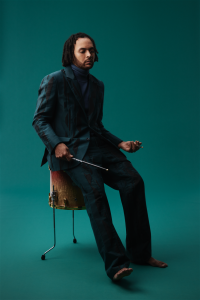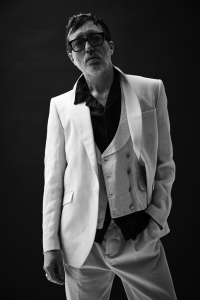Mark Kermode and his skiffle band went to Memphis to record their latest new ‘old’ album in the studio once home to the King
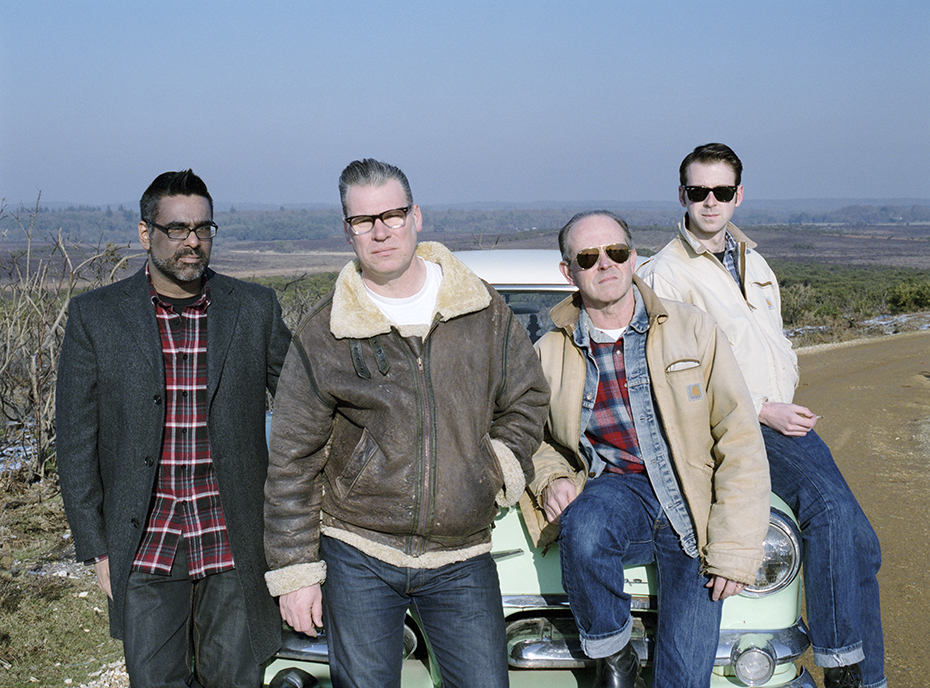
Photography Ross Trevail
The Dodge Brothers have been playing their brand of skittle infused Americana blues for over a decade now, though its members are best known for their work outside the world of music… Comprised of film critic and television presenter Mark Kermode, Alabama-born Mike Hammond, son and percussionist Al Hammond and sound engineer Aly Hirji, the band have just released their new album The Sun Set, recorded in the legendary Sun Studio Memphis, Tennessee. Favoured by Elvis Presley and country and blues alumni Johnny Cash, Carl Perkins, Howlin’ Wolf and Jerry Lee Lewis, the studio is the holy Mecca for rock ‘n’ roll enthusiasts, with its own distinct sound, harnessed for the album.
Betty: Aly, you’re a Pixies fan; Mark, you’re into punk and skiffle; how did you all come to play together, given how different your musical tastes are?
Mike Hammond: Mark’s wife Linda Ruth Williams, was teaching my wife at University, and when Mary was graduating, Mark and Linda came over for dinner. We got talking and I said I used to be in a band. He said he used to be in a band, and we both played bass –
Mark Kermode: Two bassists in a room together!
Mike: We both liked Elvis, and Elvis Costello. We sat down at a piano and said “lets do some songs”. We got a guy called Pete, who was also a historian of singing cowboys, to play harmonica…
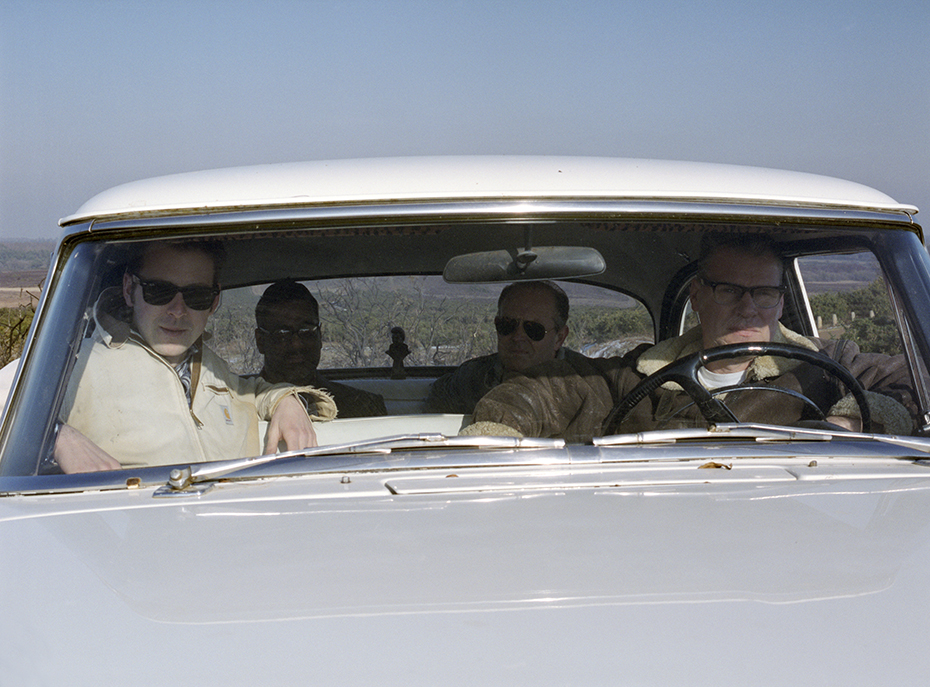
Mark:Then, Pete moved away – he went to teach at Portsmouth; he’s a very well respected writer and a bloody good musician. He’d shown me enough that I figured I could get by, so Mike and I played as a two-piece for a while with me playing bass and harmonica, and then Aly and I met. I told him to come down to a gig and check it out because he’s a sound engineer; he said “Fine, but it sounds horrible – can I fiddle with the sound?” So, he fiddled with the sound, and then the PA, and then the guitar…
Aly Hirji: It gave us Elvis, Scotty and Bill ; it gave us that line up. We’re double bass, guitar, electric guitar – the frequency change and the low end to the high end, it fills up and gives it a big sound.
Mike: Because Elvis is playing the rhythm and singing, and Scotty Moore is doing the picking, and Bill Black is playing double bass. Later on, they got DJ Fontana… We couldn’t find DJ Fontana so we grew him. That’s Al.
Mark: We first started playing when Al was a kid.
Al Hammond: I think I was 10 or 11 when you guys first started jamming in the living room. I didn’t hear the end of the set because it was bedtime!
Mark: Finally he became old enough to stay up for a gig.
Al: I joined a couple of years or so after Aly, when Mark was doing a piece for The Culture Show about skiffle, for the 50th anniversary of John Lennon and Paul McCartney meeting at a church fete, They wanted someone to play the washboard. I was living in Norwich at the time, I had just finished my degree, and dad phoned up and asked me if I wanted to be on TV, playing washboard…
Mark: But you played stuff on that first long deleted album, you are on that. And you did drums for ‘Little Maggie’…You’d played snare drum, and you took to the washboard great…
Al: Well I had to because I got it, and then found out I was going to be on telly the next day!
Mark: Well it was a happy accident, because you liked it and were good at it.
Al: I did the classic thing, which you couldn’t do in the 1950s, which is if you want to learn the washboard, you go on YouTube…
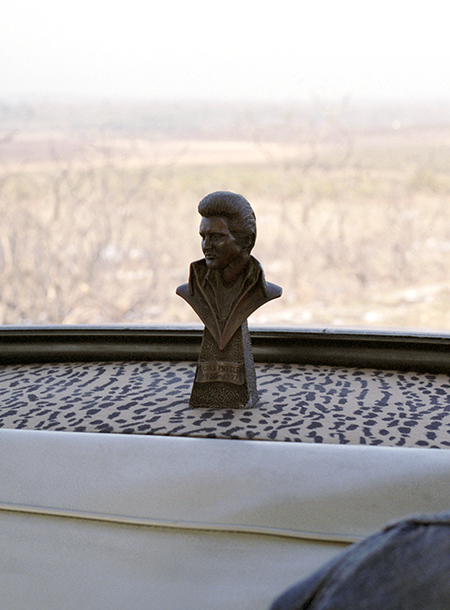
Betty: What’s the significance of the year 1958 within the context of your music?
Mike: Well, Elvis went into the army in 1959. Frank Sinatra’s great albums sort of stopped in ’58; the real classic ones are over. Miles Davis’s A Deeper Shade of Blue had come out… We always say ’58 because Tarheel Slim’s Number Nine Train was 1958.
Mark: We made a joke that we were playing old songs and we wanted to write our own stuff, but we didn’t want to write new songs. Then I thought we ought to start writing our own stuff but I didn’t want to tell Mike that that’s what we were doing…
Mike: Mark said “I’ve found this song its really great, I think we should do it, It’s called ‘The Church House Blues’, here are the lyrics”. He said, “Do you know that song?” and I said “Sure, I know that song!” I went and googled it, and I found a lot of ‘Church Blues’ and ‘House Blues’, but I couldn’t find ‘Church House Blues’. I said “Mark, I can’t find that song – did you write it?” He said no, but Linda was behind him going, “Yes he did!”
Mark: The deal became we could write songs that sound like old songs.
Aly: And those songs did as pass as old, because we played them live for about a year without telling anyone .
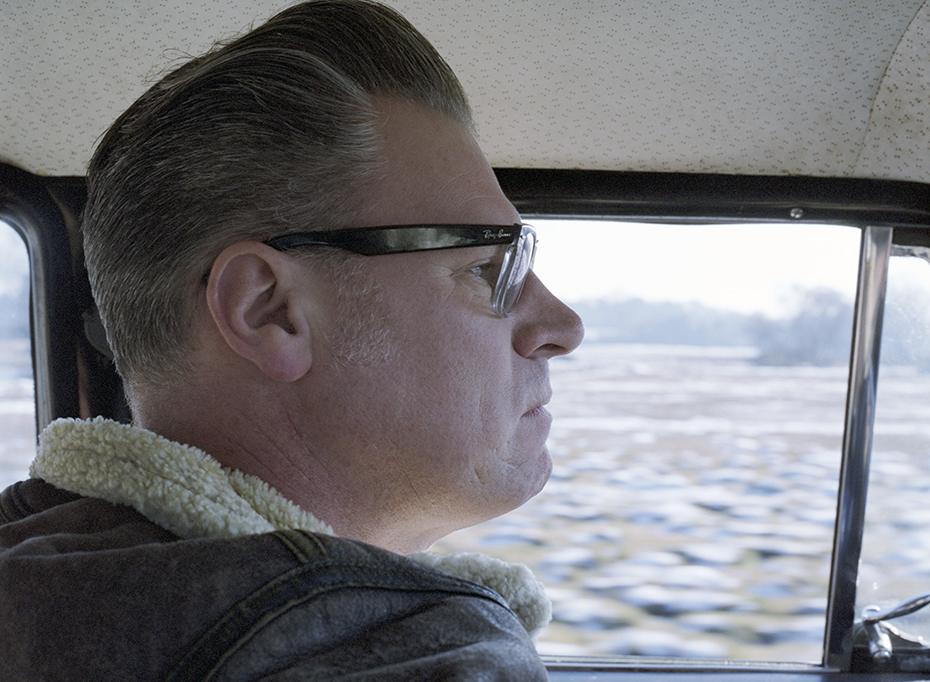
Mark: Louisa and the Devil is basically an attempt to write old songs, and the gag became we don’t write new songs, we write old songs. And we don’t play anything after 1958; we wrote this in 1957. But that’s actually seen as true because what it’s meant is that there’s a template for what you do, so you listen to the great American Songbook and think, ok lets write a song in that style. In a way, that lead to going to songs because if you write them like that and play them like that now lets try recording them like that, that’s how it ended up, just an attempt to write, play and record old songs that we just happened to have written last year.
Betty: Your new album, The Sun Set was recorded at the legendary Sun Studios in Memphis; how did you go about ‘bottling’ that Sun Studio sound?
Aly: The way we did it was the way Elvis would have done it in 1953-4 when he turned up and paid two bucks to record something. We had open mics, no headphones and we played everything live until we got it right. All we could hear was Mike’s amp – it’s a big old valve amp so you’ve got to turn it up to get a good sound.
Mark: You play differently because you’re not listening on headphones, and you’re not overdubbing…
Aly: And we were bleeding most of the time!
Mark: There was a lot of blood
Mike: This is the way they would have done it. They didn’t have headphones, they didn’t have multi-track. They had two-track; they played the song while the engineer arranged the mics in a way that he could get as good a sound as he could – the louder instruments he put further away, and the quieter instruments he put closer – and that’s what we did.
Mark: The engineer, Matt Ross-Spang, has worked at Sun for a long time and the funny thing with that room is that it pushes the mid-range. There’s a particular sound that you get that is the ‘Sun sound’; Sun Studios sounds like that because of the funny shape of the room and the fact that there’s a certain point where everything converges. It’s bizarre because you think the Sun sound is to do with slap-back echo and compression – it’s partly to do with that, and doing it on tape, but the sound of that room that is very pronounced.
When we were recording the album, we thought we would bring it back Bournemouth to mix it there… Of course, we couldn’t get it to sound like Sun, because no matter what people think, the sound of the recording is defined by the place that you record it and the place where you mix it.
After a while we thought we should just mix it at Sun, so after recording it in two nights, it took us a year to get the album out and finished. We had to send everything over to Matt track by track who would mix it in the Sun mixing desk on dead time, which is rare there, and he would get everything on and off tape.
Mike: It’s been going back and forth across the Atlantic for a year. Interestingly, the first two tracks are in mono; he didn’t mix them.
Aly: There’s something about the feel of the first two songs on the album that we just couldn’t replicate, so we used the rough mix. However much we tried, nothing lived up to those two tracks.
Betty: What was the experience like working in the same space as Elvis, Johnny and Jerry?
Aly: Surreal.
Al: [To Mark and Aly] Didn’t you take Bono’s picture off the wall?!
Aly: All around the walls, there are pictures of the greats… And then there’s Bono. We turned his picture around…
Mike: The room is filled with pictures of really famous people who’ve done what you’re about to do. It’s a little intimidating; we love the old stuff, we talk about it all the time and we try to play as best we can, but you’re about to go in front of people who know the real stuff. We were intimidated. But we didn’t need to be. Matt was great, and by the end of it, it sounded great.
The Dodge Brothers: The Sun Set is out now. Click for more information on the band

